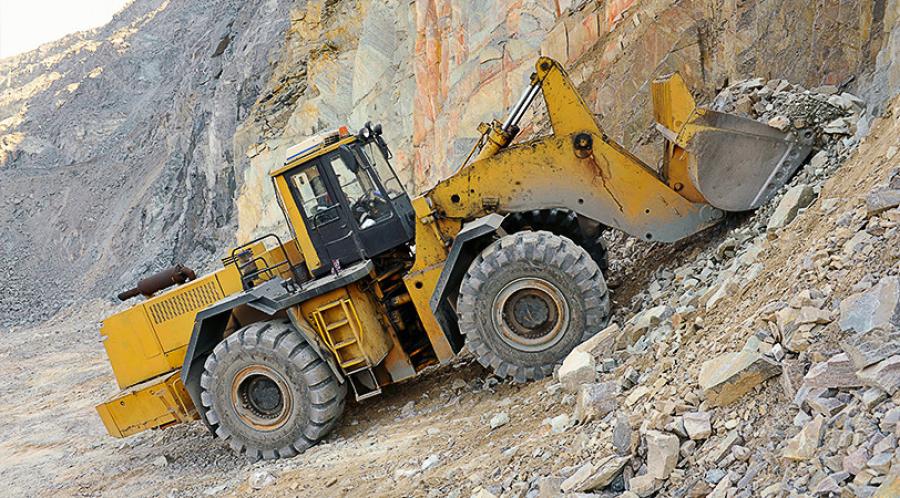If you need even one, or several, pieces of equipment in a given year, it can impact your business’ cash flow.
If you need to make many such purchases in one year, and don't have sufficient revenue to pay for them, it can sink you.
If you're a small business owner, you need to plan big equipment purchases for the new year carefully. Big equipment is usually defined as items that cost more than $500. If you need even one, or several, pieces of equipment in a given year, it can impact your business' cash flow. If you need to make many such purchases in one year, and don't have sufficient revenue to pay for them, it can sink you.
That's why you need to plan. Here's how.
1. Assess Whether You Need the Equipment Immediately
There are times when you need a piece of equipment because it is necessary to maintain your day-to-day business. If you're in construction, for example, and your forklift breaks down beyond repair, you will need a new one to continue. It's a good idea, of course, to have a cushion of cash to pay for stuff like this.
But what about if it's just something that would be nice to have, but isn't an immediate necessity? That's when you start to plan in earnest.
2. Crunch Your Numbers
It's essential for your business to keep operating in the black. Otherwise, it ceases to be a viable business and becomes a failed one! To keep that from happening, you need to take a close look at your budget before making any big equipment purchase that isn't essential.
Your top priority needs to be assessing the item's price, versus any revenue you expect it to bring in. Say you want a new laptop so you can take it onsite to do billing and other administrative tasks. Will that add to revenue? It may, if it helps streamline your invoicing or allows you to use downtime to keep up with administration. Do a cost-benefit analysis. Factor in any costs new equipment may eliminate. If your current laptop is slow, for example, a new one may add speed.
But if it looks as if the cost is not going to result in added revenue or cost-cutting for your business, think long and hard about whether you really need it. Be hard-headed. Don't fall for a new or exciting product that doesn't add anything to your business.
3. Factor in All Costs
As you crunch the costs, be sure to factor in all relevant costs of purchasing a big piece of equipment. There are often installation, maintenance or training charges, for example. You will pay taxes on it. There may be delivery charges.
It's also important to factor in the time you spend researching the equipment. You're weighing several different brands, makes and models — if not, you should be. Your time is important. Assess the costs as if you are paying yourself a specific dollar amount per hour to research capital expenditures, because essentially, you are. If you delegate the research, factor the dollars per hour for whatever that position pays.
4. Explore Methods of Purchase
If you've determined that the equipment will be additive to your business and assessed all the costs, it's time to explore what methods of purchase are best for the business.
Look at your cash flow. Do you have enough to buy it outright? Don't imperil your cash flow if the purchase puts you too close to a cash flow bottom. Cash flow is the lifeblood of small businesses. Don't cut your veins!
Look at other methods of purchase. You could, for example, explore financing a purchase. Small business owners can qualify for loans for large purchases. Your cash flow could then pay for the loan service and interest monthly. Be sure to assess whether this path makes financial sense for your business.
Another option is leasing equipment. In many businesses, this is a good financial decision. If your construction business doesn't need a forklift during the winter months, for example, see if you can sign a lease contract in which you have, and pay for, the equipment only in months you need it.
If you want to buy, but the cost is too steep, see if you can purchase high-quality used or refurbished equipment. The feasibility of doing this varies with the equipment and your business, of course. A used laptop is likely not a reasonable investment. But for larger-ticket items in some industries, used equipment is feasible, viable and an accepted way of doing business.
Don't neglect sales cycles, either. If you need an automobile for your business, for example, buy in autumn, when new models come out. You can get a new car then far more cheaply than at other times of the year, although it may not be the latest model. Most equipment has similar sales cycles, varying by month.
5. Know Your Tax Situation
It's essential to factor in taxes when purchasing big equipment. Not doing so could end up costing you far more in taxes than you needed to pay.
Check into the current status of the Internal Revenue Service's Section 179. Section 179 allows you to deduct the allowable cost of large business-related equipment purchases in one year, rather than writing it off over the equipment's life. This deduction can be very beneficial to a small business. The amount and equipment vary, so check into it first. Consult with your accountant as well.
These five steps will help you make the best business decision possible when it comes time to purchase large equipment. It's essential to plan your purchases for 2018.
Megan Wild writes is a freelance writer who specializes in construction. You can find some of her work on sites like Engineering.com, Procore, Construction Equipment Guide, and more. Follow her on Twitter @Megan_Wild.
Today's top stories











